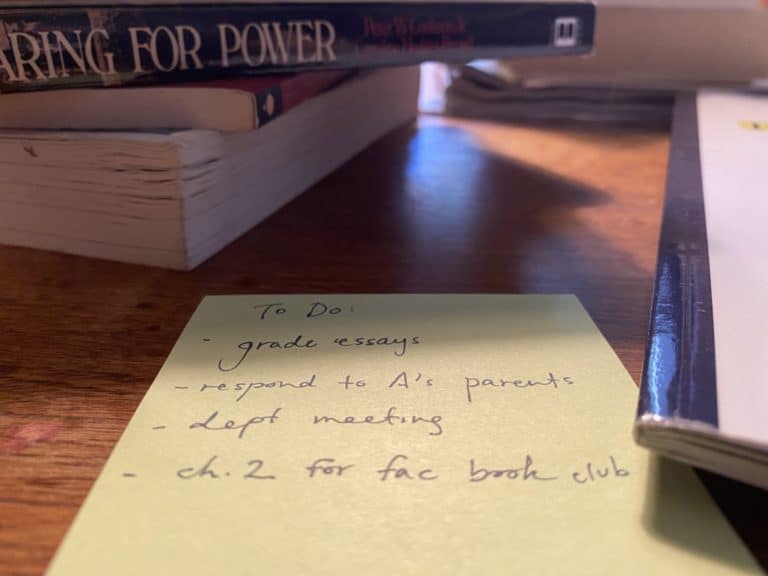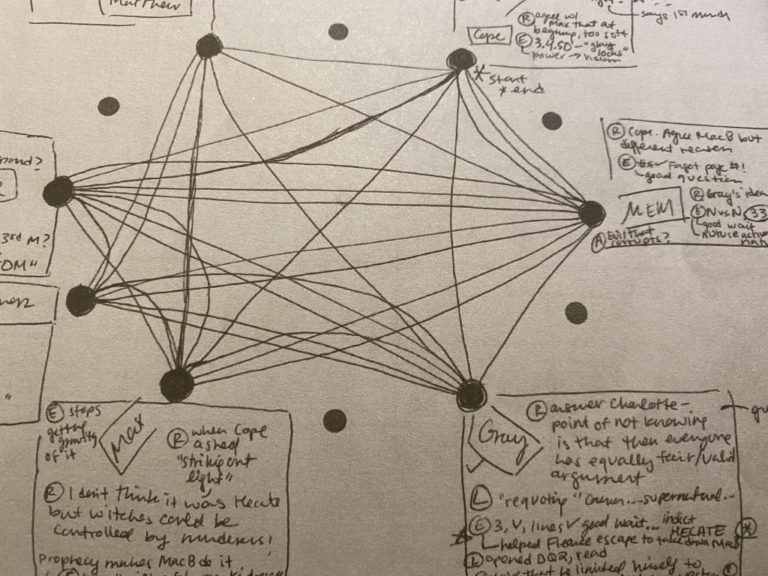Combatting Polarization with Conversation: An Interview with CDI
Mylien Duong is the Senior Director of Research at the Constructive Dialogue Institute. What follows is a conversation between Mylien and R.E.A.L.® founder Liza Garonzik about CDI’s groundbreaking new report on Polarization in K-12 Classrooms. This conversation has been lightly edited for clarity.
Liza: Tell us, what is the Constructive Dialogue Institute? Where did it come from?
Mylien: The Constructive Dialogue Institute is a national nonpartisan educational non-profit built to operationalize much of the research from Professor Jonathan Haidt and to broaden the work of Heterodox Academy. It was founded in 2017. In the aftermath of the 2016 election, political polarization was becoming problematic nationally, and people were increasingly becoming aware of it. We started out trying to solve the problem of the impact of polarization in educational spaces. CDI started out in higher ed, but we saw a lot of organic interest in other sectors: in corporations that are dealing with the same problems, nonprofit organizations dealing with the same problems, and K-12 schools dealing with the same problems.
What we know – from both research and practice – is that polarization in educational spaces keeps people from really engaging with topics that are meaningful and issues that are contentious in an even, open-minded, and informed way. It hinders their ability to develop fully informed and nuanced opinions and consider other people’s perspectives. We’re seeing people come into educational spaces already having decided what they think, or not even wanting to engage in political discussion, because they’re afraid they might say something “wrong” and get “canceled” by other people.
We can’t learn in that kind of environment. Nobody can. CDI was founded to create programming that helps students, faculty, and staff think about how to create the kind of space that allows learning to occur and where students can really engage with these issues.
Liza: That makes a lot of sense. You recently published an excellent report called Political Polarization in K-12 Classrooms. How did you design that research project? What were your goals with this project?
Mylien: We really just wanted to understand the problem: what does polarization look, feel, and sound like for K-12 teachers? We’ve seen a number of news reports about teachers being fired for saying the wrong thing; divisive school board meetings have become a Saturday Night Live skit. We really wanted to understand what’s really going on on the ground for teachers and how it is impacting their teaching.
So we sent a mass email inviting K-12 teachers to take a survey. We then invited a subset, whom we felt had interesting and complementary perspectives, to share how politics was impacting their daily lives. We wanted to hear from teachers in red states, teachers in blue states, teachers teaching in red communities in blue states and vice versa, teachers teaching across a variety of subject areas and grade levels, in order to really understand how they were experiencing polarization.
Liza: It looks as if most of these voices represented were middle and high school teachers.
Mylien: Yes, and that’s not a coincidence. That is one of the findings: middle and high school teachers found politics and polarization to be much more present in their classroom than elementary school teachers. We also found that there were a lot of social studies teachers and English teachers represented.
Liza: That’s exactly who we work with at R.E.A.L.®! I’m so struck by this quote from one of the study participants – it’s something we hear often too: “I hate to admit this, but I’m starting to walk away from discussion in my classrooms. I’ve been doing more and more watch the video, read the book, answer the questions, class is over – not by choice, but because it’s easier in today’s world.”
I understand that instinct as an educator, and yet, kids need the opposite! Were there other quotes or findings in this research that particularly have stuck out to you, or that maybe surprised you?
Mylien: Yes. The quote you just shared – I still remember sitting there and that interview. This teacher had been teaching for more than a decade, and you could tell he really cared about students. He hadn’t really thought about the impact of polarization. He just had a self-preservation instinct: how do I make this workable for myself so I can get through the day and the semester and the year?
Another story that really stuck out to me was from a teacher in a wealthy conservative area. She had been asked by a group of students to sponsor an LGBTQ+ allyship club in her school. She didn’t initiate it; she was approached by students. She said yes, because she wanted to support students.
In response to that, a group of parents in the community put on a pretty concerted campaign to get her fired. She didn’t get fired in the end, thank goodness. But she talked about the impact of that experience in a really poignant way. She talked about how she lived in this community and identified as a conservative Christian. She had this feeling of being misunderstood by other people whom she had thought were part of her “inner group.” She thought: these are the people that I identify with. These people are my neighbors. These are people I go to church with, yet they are trying to get me fired because of something I believe in. It was just really emotionally difficult for her to deal with that, as it would be for all of us.
Liza: Gosh, that’s such a complex example. Yet I know there are thousands of variations of that story in communities across the country. It reminds me of one of our ninth grade English teachers, who teaches in a very purple town in Tennessee. He talks about how with R.E.A.L.®, one of the biggest wins he’s seen is that kids are learning how to disagree with each other’s ideas, without disagreeing with each other’s entire identities. The ability to do that is so critical – and it seems to be lost.
I want to go back to your comment about the “instinct for self-preservation” and how polarization is a source of stress for many teachers, and particularly humanities teachers, where the content lends itself to more political or societal topics. Did you find any relationship between polarization and teacher burnout?
Mylien: That’s an interesting question, and actually some of this surprised me. Teachers were giving me very extreme examples: getting in trouble for having or not having certain types of flags in their classroom, and fear that they could be recorded at any moment and have that video shared with school board members or parents. They feel like they have to walk on eggshells around very basic decisions they make about what readings to assign.
I heard many, many such stories. One of the teachers we interviewed was actually somebody who was planning to resign, because the politics were getting so burdensome that he felt like he could no longer connect with what was in the best interest of the students anymore.
But there were also two things that surprised me. One was that story I just told, of the teacher whom parents had tried to have fired. She continued teaching. For me, I think that speaks to her resilience. She found a way through all of this to still say, what really matters to me are the students in my classroom day to day, and that they learn critical thinking, and they learn how to express their views, and they learn that what they think now is not necessarily what they will always think. The fact that she finds a way through that is incredible to me, after having been through what I do think was a pretty traumatic experience for her.
The other thing that surprised me was that for many of these teachers, politics is not the only problem, contrary to what the media presents. They were talking about the broken printers, the inability to get their handouts, the inability to serve all students’ needs, the stack of assignments, the daily stresses of teaching. That, to me, is incredible. Hearing some of these stories, I say, the fact that anybody has to put up with this at work is incredible and shouldn’t happen.
So these teachers are saying, yes, polarization is a problem – but so are the other eight things that are a barrier to feeling my best at work. It’s surprising and it’s not surprising, because we know that teachers are not well supported in many school districts. Grappling with political polarization is one more thing we’re asking teachers to do in an already tough working environment.
Liza: Yes, absolutely. Now, the forward-looking question: as a result of the study and at CDI more generally, how do you see dialogue and discussion helping us move forward?
Mylien: Well, we need to acknowledge that the days of saying: we don’t talk politics here aren’t available to us anymore.
As much as we need to teach kids these skills, the adults need to learn how to have difficult conversations too. We have to be able to negotiate and talk about the policies that we select for our school, the curricula that we select for our schools!
Teachers and administrators and department heads need to be having these discussions about discussion. They need to decide how they communicate, because everybody needs to be on the same page. That was one of the other things I heard: when teachers felt like they were clear on what was expected of them and felt like their administration would support them, they felt less stressed, even when the complaints or the emails were the same.
Liza: You’re exactly right. The way we think of it at R.E.A.L.® is that we are right now living a communication crisis – for students and adults alike. And it’s a question of, how can we learn to talk to each other again … so we can start talking about what matters?!
I’m so thrilled to have had the chance to connect with you and to be publicizing what I think is a truly excellent research project and mission: helping us all understand what it feels like to be a teacher in today’s divided world. Is there anything else you would add?
Mylien: I really just want to say that I think it can feel very isolating to teach in this type of environment, but there is support out there. There are people who are trying to figure this out, like our organizations, there are resources out there for teachers, and there are communities for teachers to tap into to get support around this type of issue. I would just encourage the people who have been struggling with this on their own to reach out. At CDI – and it sounds like at REAL too – we know this is a solvable problem and invite everyone to come together to solve it.






